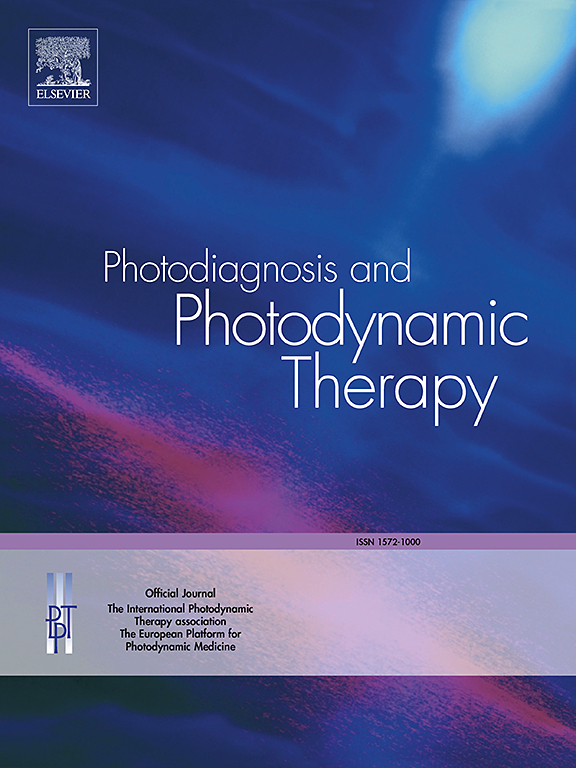The clinical efficacy of intravascular laser irradiation of blood (ILIB): A narrative review of randomized controlled trial
IF 3.1
3区 医学
Q2 ONCOLOGY
引用次数: 0
Abstract
Background
Intravascular Laser Irradiation of Blood (ILIB) is a systemic application of photobiomodulation therapy (PBMT), proposed to modulate oxidative stress, inflammation, and mitochondrial function. Although its clinical use is expanding across various medical conditions, a consolidated evaluation of its therapeutic relevance remains lacking.
Objective
This review aimed to synthesize available evidence from randomized controlled trials (RCTs) on the clinical efficacy and safety of ILIB, with particular focus on outcomes related to pain, inflammation, oxidative stress, and quality of life.
Methods
a narrative literature review guided by PRISMA principles and the PROPS contextual framework. Eight RCTs involving 340 participants were identified through searches in five electronic databases and gray literature. Studies were eligible if they investigated ILIB—via intravascular or transcutaneous application—and reported clinical or biochemical outcomes compared to sham, placebo, or standard care.
Results
Eight RCTs comprising 340 participants were included, addressing conditions such as cardiovascular disease, diabetic neuropathy, osteoarthritis, spinal cord injury, chronic endometritis, cellulite, and pediatric dental anxiety. ILIB demonstrated consistent reductions in pain (30–55 %), inflammatory cytokines (e.g., IL-6, TNF-α), and oxidative stress markers, along with significant improvements in mitochondrial activity and quality-of-life indicators (SF-36, WOMAC). No serious adverse events were reported. RoB analysis indicated four studies with low risk and four with some concerns.
Conclusions
ILIB appears to be a safe and promising intervention with systemic biological effects and multidimensional clinical benefits. Future clinical research should prioritize standardized dosimetry protocols and long-term, patient-centered outcomes to guide broader integration into evidence-based care.
血管内激光照射血液(ILIB)的临床疗效:随机对照试验的叙述性回顾。
背景:血管内激光照射血液(ILIB)是光生物调节疗法(PBMT)的一种系统应用,被提出用于调节氧化应激、炎症和线粒体功能。尽管其临床应用正在扩大到各种医疗条件,但对其治疗相关性的综合评估仍然缺乏。目的:本综述旨在综合随机对照试验(rct)中关于ILIB临床疗效和安全性的现有证据,特别关注与疼痛、炎症、氧化应激和生活质量相关的结果。方法:以PRISMA原则和PROPS语境框架为指导,进行叙事性文献综述。通过对5个电子数据库和灰色文献的检索,确定了8个随机对照试验,涉及340名参与者。如果研究通过血管内或经皮应用ilib,并报告与假手术、安慰剂或标准治疗相比的临床或生化结果,则研究符合条件。结果:包括340名参与者的8项随机对照试验,涉及心血管疾病、糖尿病性神经病变、骨关节炎、脊髓损伤、慢性子宫内膜炎、脂肪团和儿科牙科焦虑等疾病。ILIB显示出疼痛(30-55%)、炎症细胞因子(如IL-6、TNF-α)和氧化应激标志物的持续减少,以及线粒体活性和生活质量指标的显著改善(SF-36, WOMAC)。无严重不良事件报告。RoB分析显示,四项研究的风险较低,四项研究的风险较高。结论:ILIB似乎是一种安全且有前景的干预措施,具有全身生物学效应和多方面的临床益处。未来的临床研究应优先考虑标准化的剂量学方案和长期的、以患者为中心的结果,以指导更广泛地融入循证护理。
本文章由计算机程序翻译,如有差异,请以英文原文为准。
求助全文
约1分钟内获得全文
求助全文
来源期刊

Photodiagnosis and Photodynamic Therapy
ONCOLOGY-
CiteScore
5.80
自引率
24.20%
发文量
509
审稿时长
50 days
期刊介绍:
Photodiagnosis and Photodynamic Therapy is an international journal for the dissemination of scientific knowledge and clinical developments of Photodiagnosis and Photodynamic Therapy in all medical specialties. The journal publishes original articles, review articles, case presentations, "how-to-do-it" articles, Letters to the Editor, short communications and relevant images with short descriptions. All submitted material is subject to a strict peer-review process.
 求助内容:
求助内容: 应助结果提醒方式:
应助结果提醒方式:


